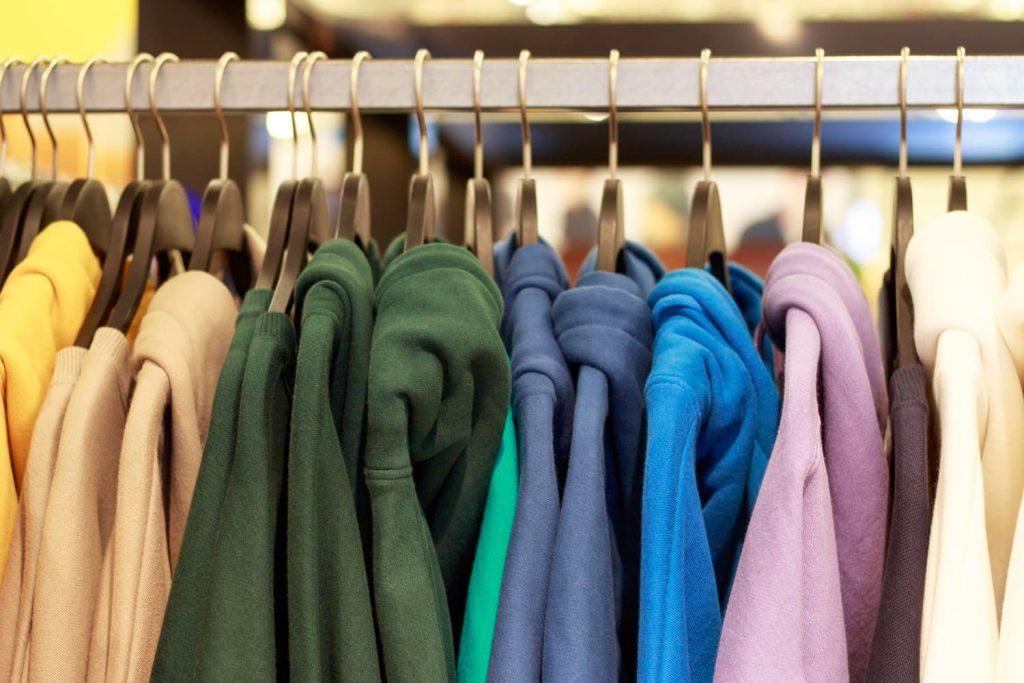World Class Textile Producer with Impeccable Quality

World Class Textile Producer with Impeccable Quality

Do you like hoodies? From students to working professionals, and from casual wear to outdoor sports, the audience as well and scenarios for hoodies are incredibly diverse. Undoubtedly, it is a type of apparel that everyone recognizes. A great outfit can catch people’s attention, and the right hoodie fabric can significantly enhance your wearing experience. It can be said that the hoodie fabric is the key factor in the overall wearing experience.
Fabric is the foundation of a garment. Different hoodie fabrics directly affect the comfort, functionality, and durability of the sweatshirt, as well as its appearance. Each hoodie fabric has its own their advantages and disadvantages.
For example, cotton hoodie fabric is soft and skin-friendly, but the heavy cotton may make you feel stuffy. Polyester jerseys are smooth to the skin, but less breathable and prone to static electricity.
The next step is to provide you with a detailed description of the characteristics, advantages and disadvantages of common hoodie fabric.
Cotton: Soft, breathable and skin-friendly, if you have more sensitive skin, you usually can't go wrong by choosing it.
Polyester: It is a synthetic fiber, durable, wrinkle-resistant and color fastness.

Coton-Poly Blend: A blend of cotton and polyester weaving, combining the advantages of each.
| Cotton Content (%) | Polyester Content (%) | Characteristics | Common Uses |
| 65 | 35 | Balances comfort and durability | Everyday clothing |
| 50 | 50 | Enhanced durability and wrinkle resistance | Workwear, school uniforms |
| 35 | 65 | Greater focus on durability and wrinkle resistance | Outdoor clothing, sportswear |
| 80 | 20 | Nearly as comfortable as pure cotton with improved durability | Premium casual wear |
| 20 | 80 | High strength and abrasion resistance | Sportswear, outdoor gear |
Fleece: Made of polyester fiber with a very fluffy surface through brushing.
Flannel: Generally made of cotton or wool, the surface will be slightly fluffy
Wool: Mainly sheep wool with excellent warmth and elasticity.
| Property | Cotton | Polyester | Cotton-Poly Blend | Fleece | Flannel | Wool |
| Warmth | Medium | Low | Medium | High | Medium | Very High |
| Breathability | High | Low | Medium | Low | Medium | High |
| Moisture Absorption | Very High | Low | Medium | Low | High | High |
| Durability | Medium | High | High | High | Medium | High |
| Weight | Medium | Light | Medium | Light | Medium | Medium |
| Price | Medium | Low | Medium | Medium | Low | High |
| Ease of Care | Low | High | High | High | Medium | Low |
| Eco-Friendliness | Medium | Low | Medium (Depends on Blend Ratio) | Low | Medium | High |
| Suitable Scenarios | Casual Wear, Sensitive Skin | SportswearOutdoor Activities | Daily Commute, Cost-Effective Choice | Outdoor Sports, Winter Insulation | Fall/Winter Shirts, Sleepwear | Winter coats, high-end sweaters |
If you need to attend parties and events, we recommend that you choose a facecloth or other special hoodie fabric. Flannel gives your hoodie a shiny and delicate luster, and with unique patterns, such as embroidery, it can add a fashionable and high-class sense to your outfit.

First of all, adjust the water temperature of the washing machine to below 30℃. At the same time, the cotton hoodie fabric must be set laundry bag, it is recommended to choose a mesh density ≤ 3mm laundry bag, which can reduce friction. It is also best not to use softeners, which can clog the fiber pores of hoodie fabric and reduce moisture wicking.
The hoodies pilling treatment is flexible to change depending on the hoodie fabric.
| Tool | Suitable Materials | Effect Comparison |
| Electric Fabric Shaver | Cotton, Blended Fabrics | High efficiency, but may damage thin fabrics |
| Transparent Wide Adhesive Tape | Fleece, Flannel | Temporary fix, may leave adhesive residue |
| Silicone Lint Brush | Wool, High-End Fabrics | Gentle lint removal, requires multiple uses |
Not necessarily, the warmth is mainly related to the grams of fleece per unit area, e.g. 300g/m² > 200g/m² is warmer. Therefore, fluffy does not equal warmth. Thick fleece with low density is easily compacted and the warmth will be reduced.
When shopping, you can check the “weight” parameter on the hoodie details page. In winter, it is recommended to choose hoodies with a fleece weight of ≥280g/m² for better warmth.
If you are making a purchase in a brick-and-mortar store, you can do a press test with your hand on the hoodies, the faster the rebound, the higher the density it is.
Hoodie fabric determines whether the hoodie you choose can fit your application scenarios, as well as the wearing experience. In the previous article, we have introduced 6 common hoodie fabrics, including cotton, polyester, cotton-polyester blend, fleece, facecloth and wool, including their characteristics, advantages and disadvantages. Then, we introduce the hoodie fabrics suitable for different application scenarios, and hope these suggestions can be some references for your hoodie shopping, so that you can buy the hoodie that best meets your needs